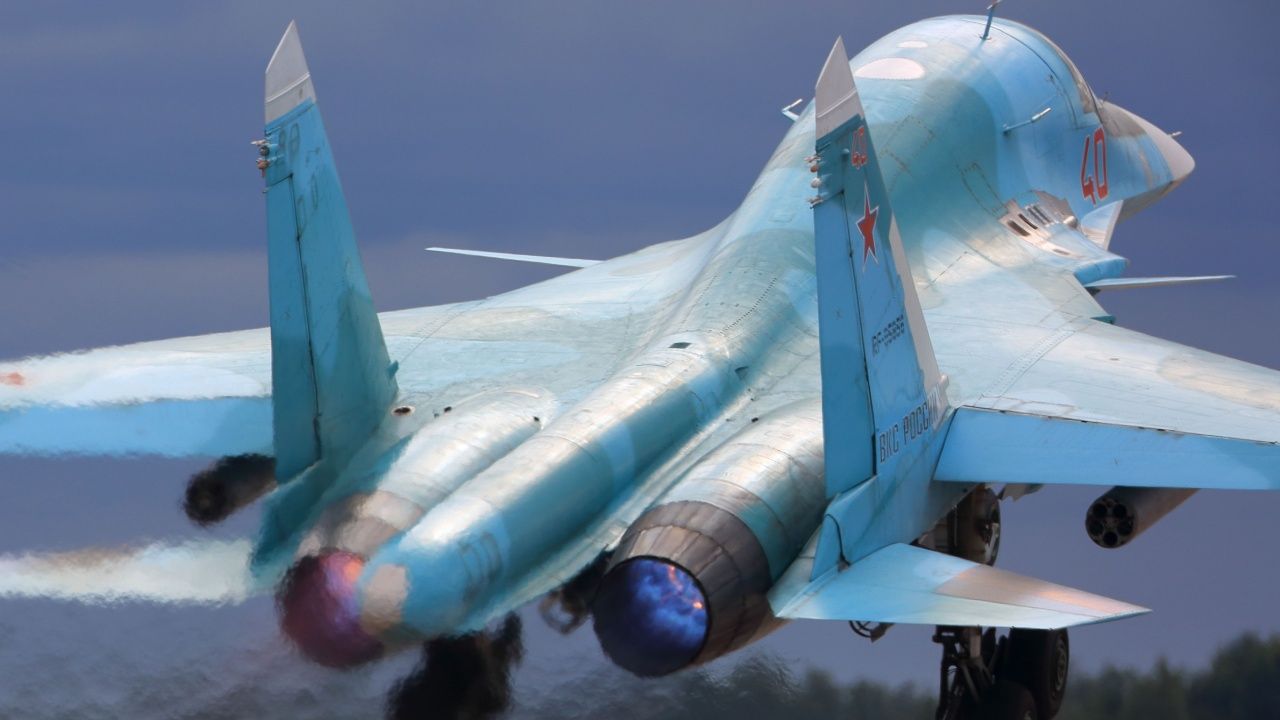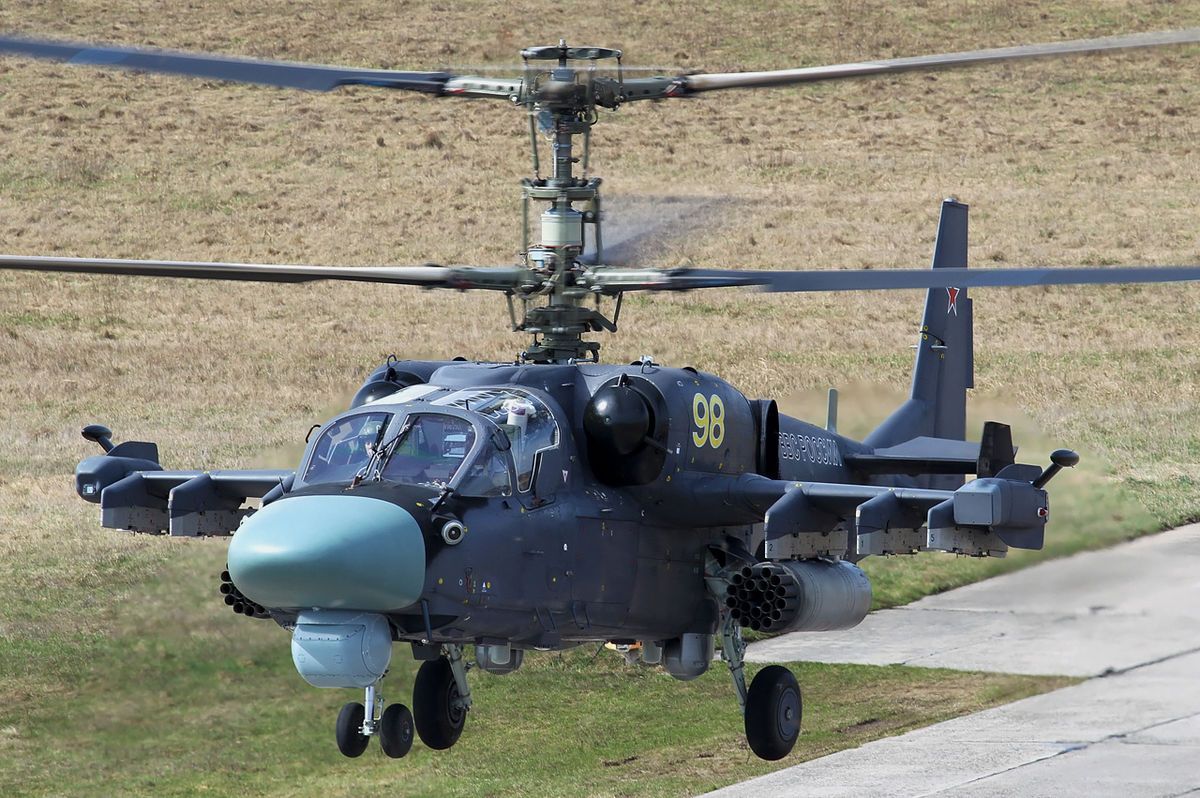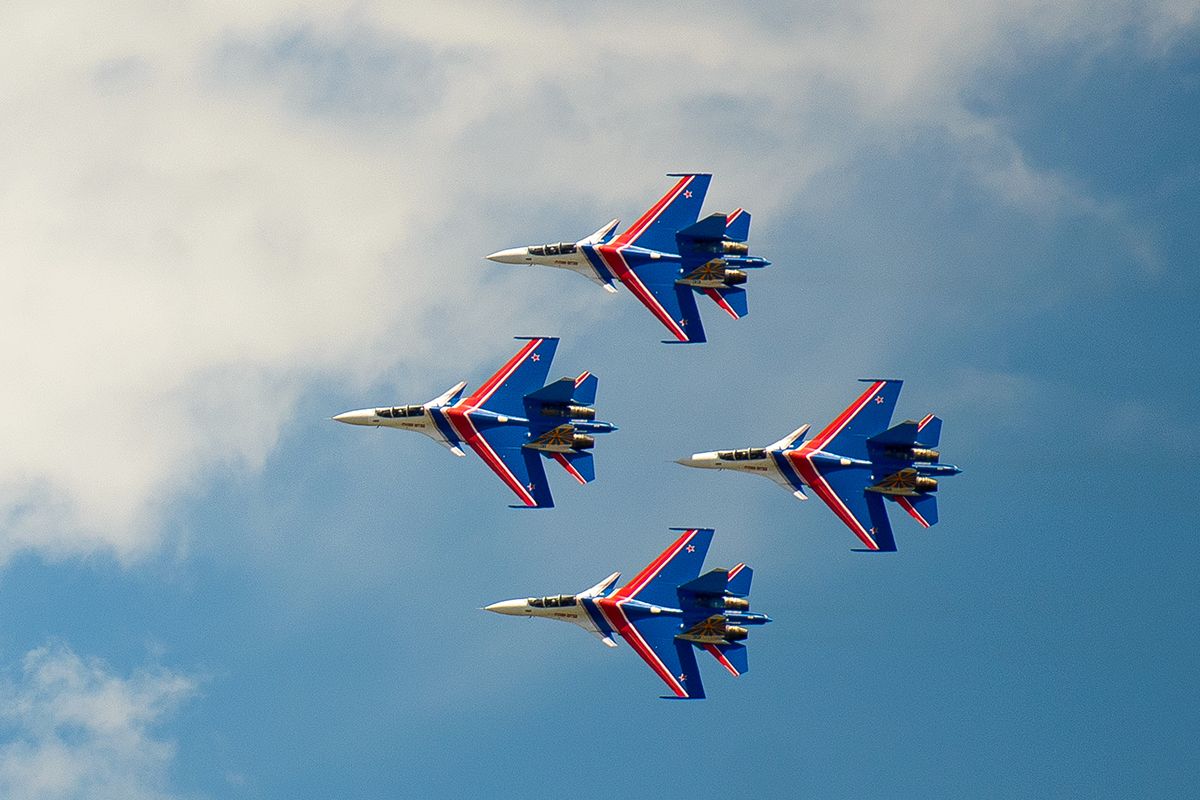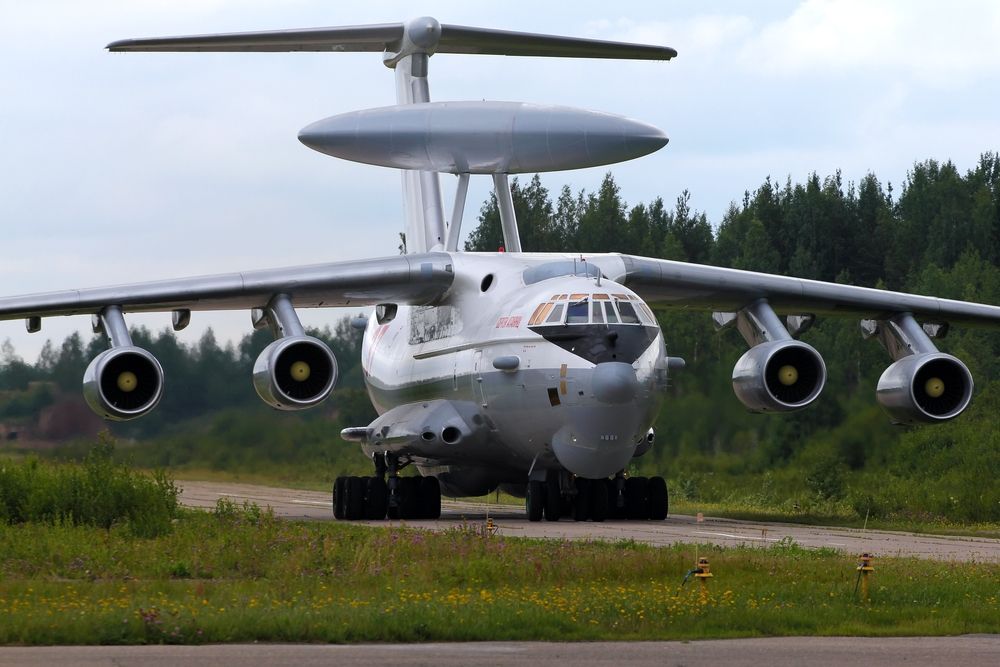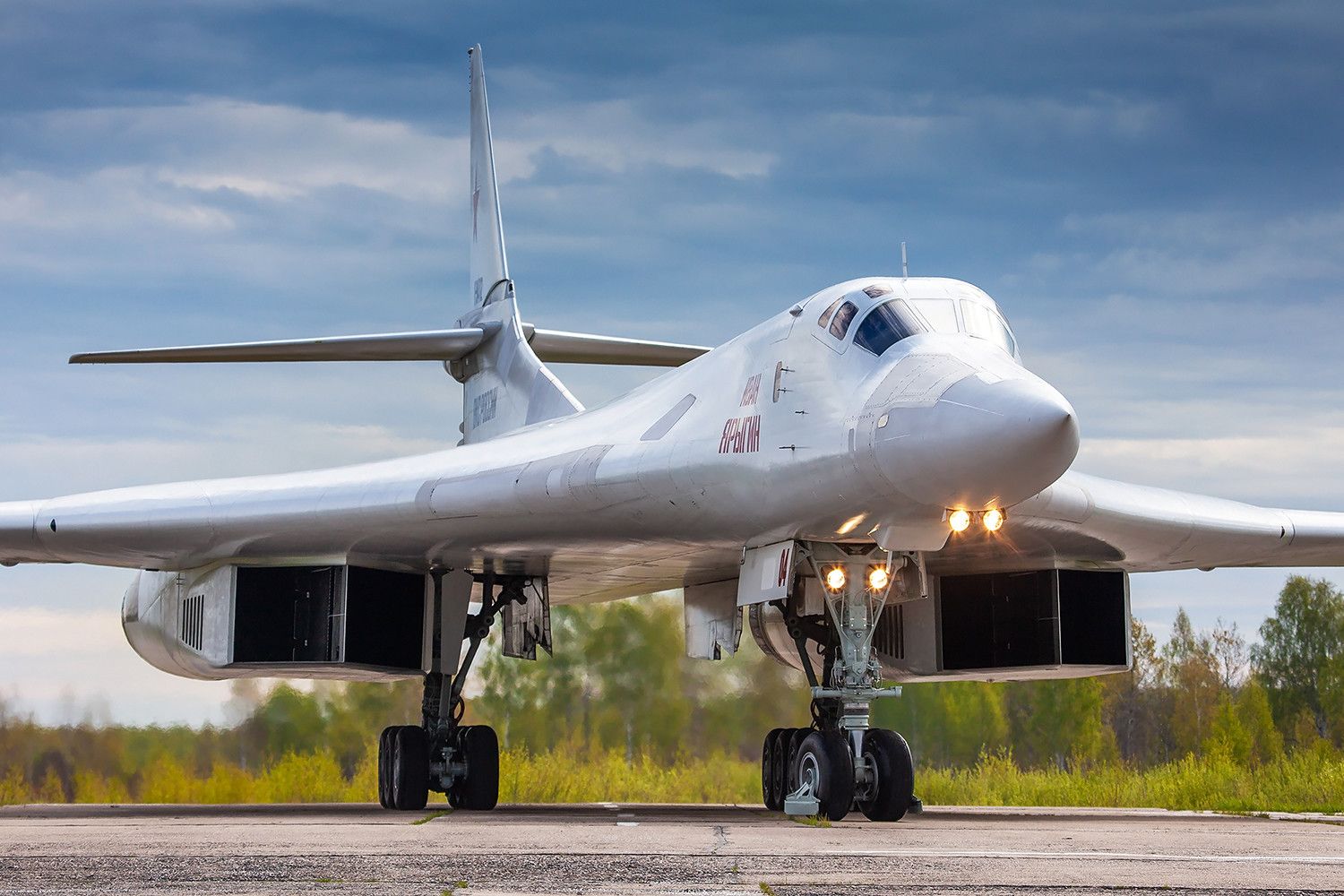Summary
- Russia is building aircraft shelters at an airbase 300km from the front line in anticipation of deep strikes by Ukraine.
- These shelters, likely funded by sponsors, may not provide much protection but could help hide jets from attack.
- Russia’s Air Force has suffered losses, with many aircraft destroyed by Ukrainian missile and drone strikes.
Satellite images show Russia has built a dozen aircraft shelters at an airbase in Russia’s Volgorod Oblast. This came soon after Ukraine attacked the Russian airbase at Belbek, destroying or damaging several aircraft. Nothing changes a military organization faster than being shot at. As Ukraine develops (and receives) ever more means to strike Russian air bases far behind the frontline, Russia appears to be (finally) building shelters to protect its vulnerable jets. However, these may not be the hardened shelters many analysts think Russia should build.
Satellite images show Russian aircraft shelters
Recent satellite images have shown Russia building hangers for its aircraft at its Marinovka Airfield, around 300 kilometers or 185 miles from the front line. Russia is known to base Su-24 Fencer and S-34 Fullback striker-bombers at this airbase. The satellite images show 12 hangers and four uncovered Su-24 jets parked beside each other.
The much-watched Russian Telegram channel ‘FighterBomber‘ (believed to have links with the Russian Air Force) wrote, “It’s clear that these arched canopies were built in a hurry because there was nowhere else to go.” According to The Aviantionist, the channel also suggests that new shelters could have been built with funds from crowdfunding.
According to the FighterBomber channel, these are not hardened shelters but “lightweight shelters”—essentially sheds. These seem to have been built by “caring citizen sponsors.” So, while the shelters will likely do nothing to protect the aircraft, they may have the benefit of hiding them. Knowing which of these sheds is housing a juicy target may be difficult.
In 2014, Russian President Vladimir Putin was reported to have boasted that he could take Kyiv in 14 days. Now 2.5 years into the full-scale Russian Invasion of Ukraine, Russia is having to ever-more protect its airbases and other infrastructure ever further behind the lines from Ukraine’s growing list of long-range strike capabilities.
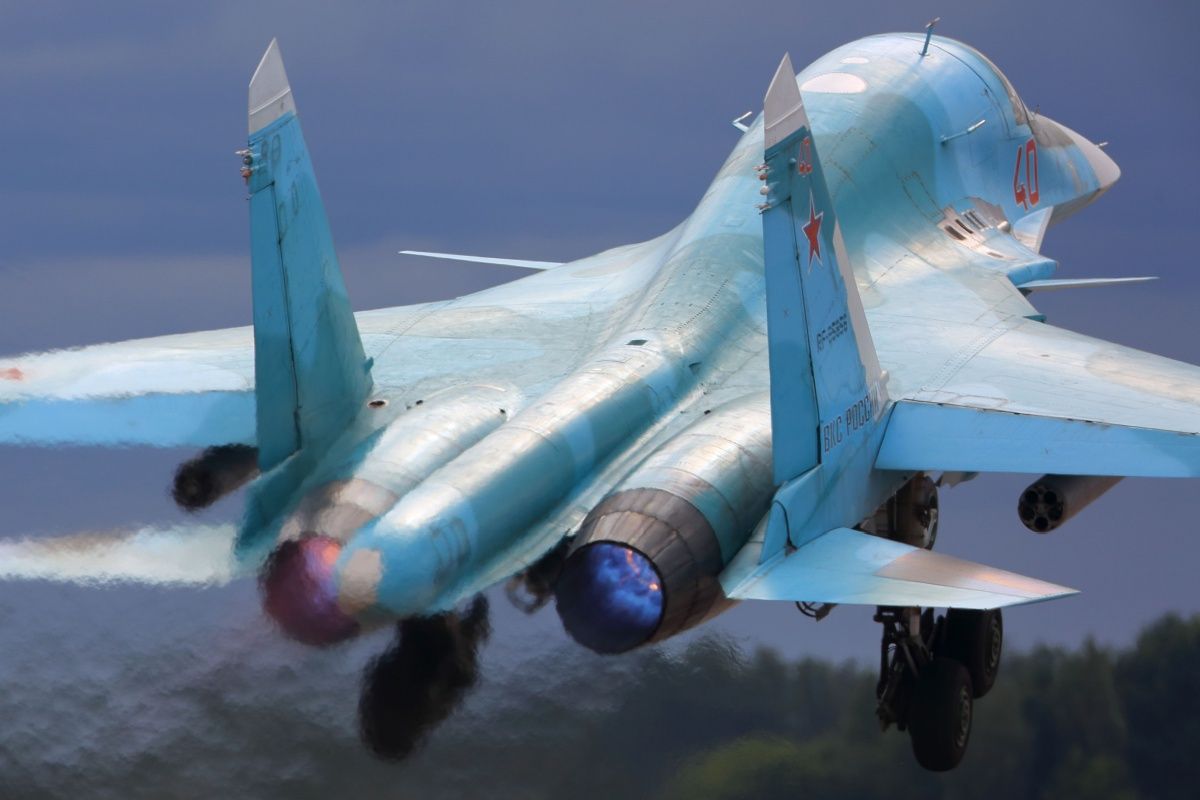
Related
Russia Lost Another Su-34 Fighter-Bomber. Did Ukraine Get Its Much-Needed Patriot Missiles?
Russian sources report another Su-34 fighter bomber has been lost while fighting in Ukraine.
From paint decoys to adorning tires
While constructing hardened hangars is expensive, it is somewhat confusing why Russia didn’t build hangars for its aircraft earlier. Perhaps Russia assumed its formerly formidable air defense network would be enough to effectively defend its air bases from attack.
In response to Ukrainian attacks, Russia has sometimes dispersed its aircraft, painted decoy aircraft on the apron (a confusing move as they are very obviously decoys), and even placed dozens of tires on the aircraft as protection.
Tires on bombers and other aircraft were first observed in September 2023 at the Engels Air Base, where Russia bases its strategic bombers (including Tu-95s and Tu-160s). It is unclear if the tires would add meaningful protection in practice. They may have been intended to make the aircraft harder to spot on optical cameras, or perhaps it was just the result of commanders’ need to “do something” when faced with no workable solutions.
According to the Oryx blog, Russia is now confirmed to have lost around 250 fixed and rotary aircraft from all causes in the war (the actual number could be much higher). While this is a painful loss, it is likely somewhat sustainable for Russia as they can produce new aircraft and refurbish old aircraft. That said, the Russian Air Force’s performance in the war has been underwhelming. With the war now in its third year, it remains unable to contest the air beyond the frontline.
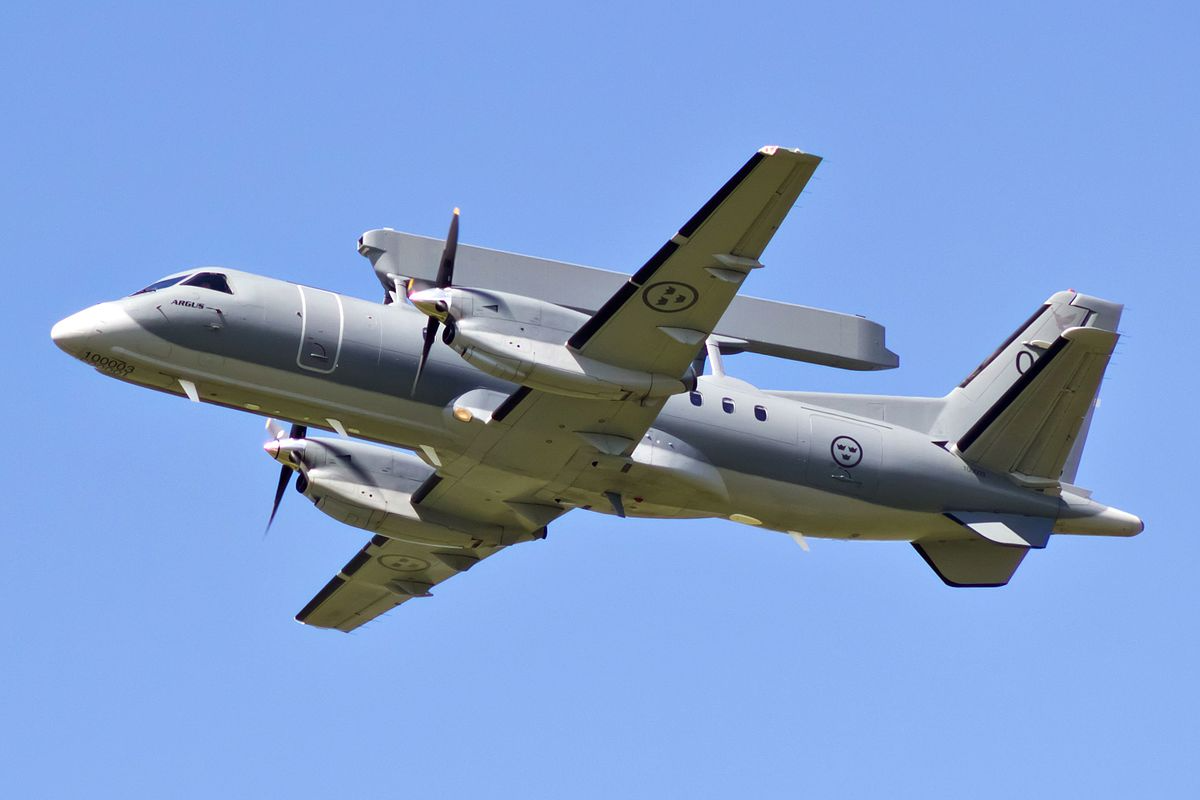
Related
Sweden To Donate AWACS Aircraft As A Force Multiplier For F-16s
Sweden has announced it will supply one of its two ASC 890 AWACS aircraft to Ukraine as it is due to receive F-16 fighter jets.
Growing Ukraine attacks on bases
While Russia’s air defense has succeeded in shooting down an untold number of Ukrainian drones and missiles, many have gotten through to destroy a large number of aircraft on the ground. When parked on the ground, there is little difference between an F-22 Raptor and a WW2 Mustang. They are just sitting soft targets.
Photo: JetKat l Shutterstock
Ukraine has struck numerous Russian airbases in both occupied Ukraine (including Crimea) and deep in Russia proper. These strikes have been carried out with missiles (including Neptune missiles and US-supplied ATACMS) and drone strikes. A recent attack on Belbek Airbase destroyed a MiG-31 and Su-27 fighters (the Su-27 was a “Russian Knights” aerobatic fighter seen at the Russian parades and other special events).
Notable Ukrainian attacks on Russian airbases include the August 2022 attack on Saki Airbase in Crimea, December 2022 drone attacks on Dyagilevo and Engels-2 air bases (damaging strategic bombers), the August 2023 drone attack on Pskov Airfield, the October 2023 ATACMS attack on Berdiansk and Luhansk airfields (destroying or damaging dozens of helicopters), and the May 2024 attack on Belbek Airbase in Crimea.
There are more Ukrainian attacks on Russian airbases, but the outcome may not be clear from open-source intelligence. For example, in March 2024, Ukraine attacked the Taganrog Beriev Aviation Scientific and Technical Complex, where they are maintained. Satellite images showed a large hole in the hangar where the A50U would be repaired, but it is unclear from the images if there was an A50U inside at the time of the attack. It is known Ukraine has shot down two rare Beriev A50-U AWACS aircraft (although Russia claims they did it themselves).
Things have taken a turn for the worse for Russia as the United States has started to supply Ukraine with larger numbers of 40-year-old ATACMS missiles. These have been shredding Russian air defense, including S-400 systems that had been thought to be among the most capable in the world. S-400s (especially the radars) are extremely expensive and difficult to replace. With each one taken out, the bases become ever more vulnerable to Ukrainian attacks.

